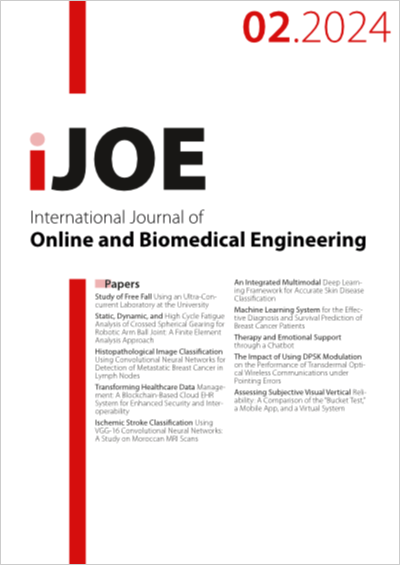Ischemic Stroke Classification Using VGG-16 Convolutional Neural Networks: A Study on Moroccan MRI Scans
DOI:
https://doi.org/10.3991/ijoe.v20i02.44845Keywords:
Ischemic Stroke, Deep Learning, Transfer Learning, VGG-16, Data AugmentationAbstract
This study presents a comprehensive exploration of deep learning models for precise brain ischemic stroke classification using medical data from Morocco. Following the OSEMN approach, our methodology leverages transfer learning with the VGG-16 architecture and employs data augmentation techniques to enhance model performance. Our developed model achieved a remarkable validation accuracy of 90%, surpassing alternative state-of-theart models (ResNet50: 87.0%, InceptionV3: 82.0%, VGG-19: 81.0%). Notably, all models were rigorously evaluated on the same meticulously curated dataset, ensuring fair and consistent comparisons. The investigation underscores VGG-16’s superior performance in distinguishing stroke cases, highlighting its potential as a robust tool for accurate diagnosis. Comparative analyses among popular deep learning architectures not only demonstrate our model’s efficacy but also emphasize the importance of selecting the right architecture for medical image classification tasks. These findings contribute to the growing evidence supporting advanced deep learning techniques in medical imaging. Achieving a validation accuracy of 90%, our model holds significant promise for real-world healthcare applications, showcasing the critical role of cutting-edge technologies in advancing diagnostic accuracy and the transformative potential of deep learning in the medical field.
Downloads
Published
How to Cite
Issue
Section
License
Copyright (c) 2023 Wafae Abbaoui, Sara Retal, Soumia Ziti, Brahim El Bhiri, Hassan Moussif

This work is licensed under a Creative Commons Attribution 4.0 International License.



